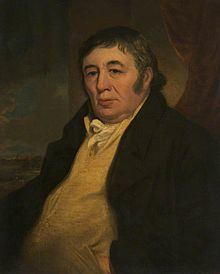Former type General Partnership Founder Peter Rothwell | Defunct 1864 Founded 1822 | |
 | ||
Industry EngineeringHeavy industry Predecessor Smalley, Thwaites & Co. Headquarters Union Foundry, Black Horse Street, Bolton, United Kingdom | ||
Rothwell, Hick and Rothwell was an engineering company in Bolton, England. Set up in 1822, the partners became interested in the production of steam locomotives after the Rainhill Trials. The company's first engine was Union a vertical boiler 2-2-0 for the Bolton and Leigh Railway of which Hick was a promoter and one of the original shareholders, followed by three more locomotives the following year for American railways.
Contents
Rothwell and Company
In 1832, Benjamin Hick left to set up his own business, B. Hick and Sons, to be replaced by Benjamin Cubitt, (younger brother of William Cubitt) from Fenton, Murray and Jackson. The firm then became Rothwell and Company. A further order for America was fulfilled in 1833, then for a couple of years the firm was occupied with pumps and stationary engines.
1830s
From 1836 steam locomotives became their main business. Up to 1840 they produced 56, 28 of which went abroad. Of note is a 4-2-0 for the South Carolina Railroad to the design of Horatio Allen. This had 4-foot-6-inch (1.37 m) drivers, with a swivelling front bogie, and reputed to have worked for 35 years. A deal of sub-contract work came from Edward Bury and Company.
1840s
From 1841, the company began a batch of engines for the broad gauge Great Western Railway. The largest order came in 1847 for 28 2-2-2 engines for the London and South Western Railway.
1850s
Possibly the most remarkable were some 4-2-4 T engines for the Bristol and Exeter Railway built in 1853/4 with 9-foot-diameter (2.7 m) unflanged driving wheels, and two ball-and-socket swivelled bogies. They weighed 42 tons and achieved speeds of 82 mph, the fastest engines of the time.
The quality of the company's products brought in repeat orders. Many of the engines were still in service twenty years later. From 1857 the engines were to Alexander Allan's design and were similar to the Old Crewe type. These were sold to the Lancaster and Carlisle Railway and the Eastern Counties Railway.
The last to be built were four broad gauge engines for the Bristol and Exeter Railway and two saddle tanks for the Carmarthen and Cardigan Railway.
Closure
In the face of reduced business and increasing competition, the company closed in 1864. Part of the works was taken over by the Bolton Iron and Steel Company, which was later absorbed by Henry Bessemer and Company in 1906.
